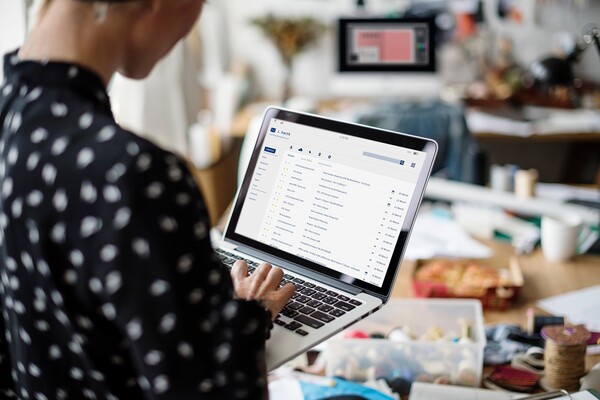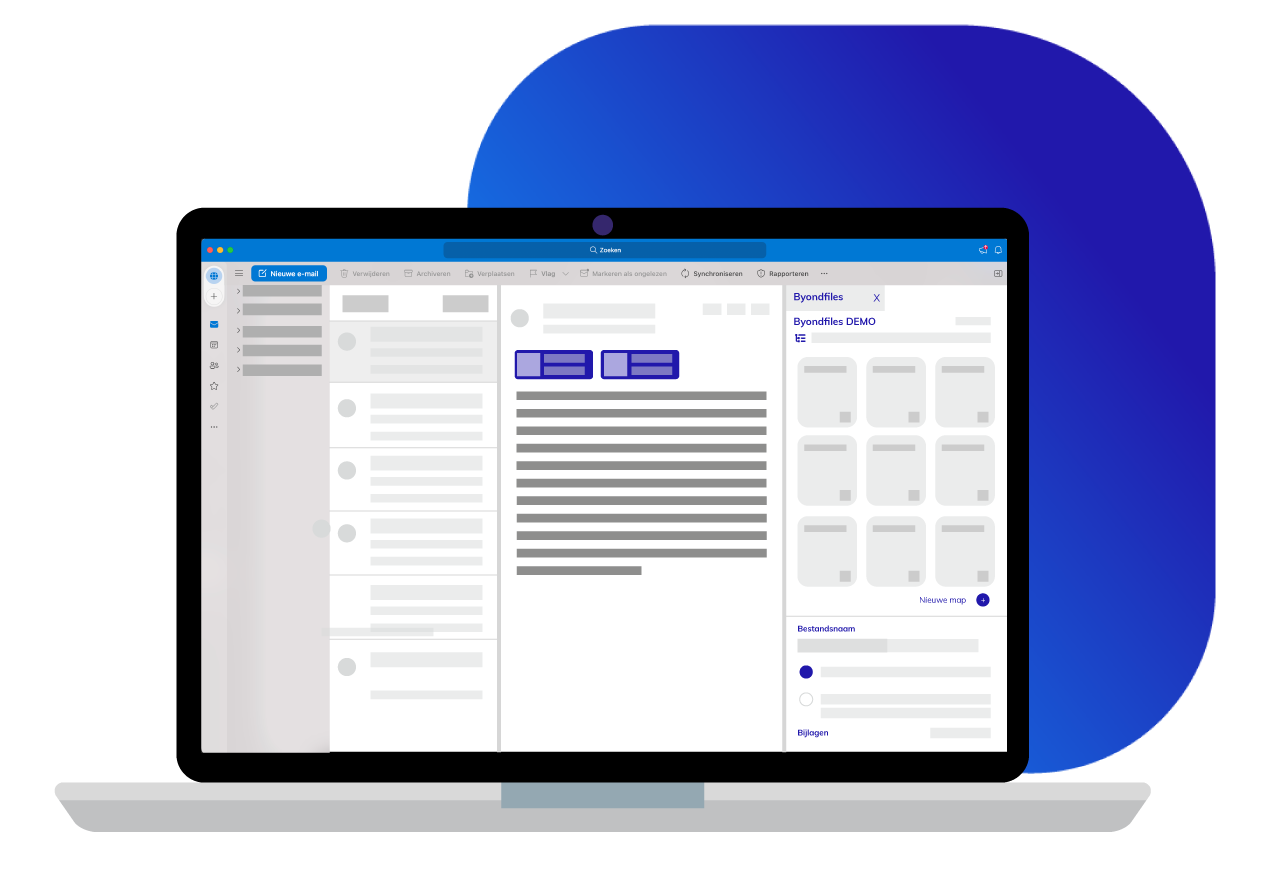Handige tips om uw mailbox te managen
Uit een Forbes artikel van 2017 leren we dat kantoormedewerkers gemiddeld zo’n 200 berichten krijgen per dag, waarvan er ongeveer 144 niet relevant zijn. Hierdoor spenderen ze twee en een half uur aan het lezen en beantwoorden van deze mails. Dit was in 2017. Ondertussen zijn we 2021 en zijn deze cijfers nog verder gestegen. Gelukkig bestaan er handige manieren om uw mailbox te filteren zodat u niet meer wordt overladen en u uw tijd nuttiger kan gebruiken. Ontdek hier onze tips.

Hoe ontstond deze e-mail overload?
De verspreiding van e-mail in de jaren negentig heeft de werkvloer getransformeerd. Iedereen kon elkaar bereiken, op elk moment van de dag. Uiteraard brachten de e-mails ook verplichtingen met zich mee. Ze moesten bekeken en beantwoord worden, op een regelmatige basis. Werknemers die zich enkel zorgen moesten maken over hun werk, een meeting of een telefoontje, werden plots overbelast met e-mails. Dit zorgde voor veel meer chaos in een werkdag.
E-mails ontvangen is op zich niet zo belastend, maar we voelen ons verplicht ze zo snel mogelijk te openen en beantwoorden. Iedere keer we een nieuwe mail binnen krijgen, voelen we dan ook een kleine beloning in de vorm van dopamine.
In een korte tijd is het e-mailverkeer geboomd en ontvangen we nu dagelijks een overload aan berichten. Zeker in tijden van een pandemie, waarbij we massaal thuiswerken, is dit een groter probleem dan ooit tevoren. We verliezen niet enkel tijd met het verwerken van e-mails, maar worden ook te makkelijk afgeleid waardoor we ons niet kunnen focussen op belangrijke taken.
Kunnen we e-mails verminderen?
Helaas kunnen we de stroom van e-mails niet verminderen, maar met enkele handige hacks kunnen we er wel voor zorgen dat ze ons minder afleiden.
Een van de meest bekende auteurs die zich over dit probleem heeft gebogen, is waarschijnlijk Merlin Mann, die bekend staat voor zijn 43 Folders productivity blog. Het concept van zijn Inbox Zero werd in 2007 heel populair toen zijn presentatie in de HQ van Google op Youtube terecht kwam. Merlin had zich op zijn beurt echter fel laten inspireren door de Getting Things Done methodologie van David Allen.
Enkele persoonlijke hacks
Er bestaat een klassieke productiviteitstheorie waarbij een kantoormedewerker een papier nooit meer dan één keer mag aanraken. U moet het papier één keer lezen en er dan iets mee doen. Op basis van deze theorie bedacht Mann zijn methode voor het efficiënter verwerken van e-mails.
Elke e-mail die binnenkomt, leest u één keer. Afhankelijk van de inhoud van de e-mail en de verwachtingen die naar u worden gesteld, heeft u 5 acties om uit te kiezen:
- Verwijderen of archiveren: u heeft de informatie opgenomen en hoeft er verder niks mee te doen.
- Delegeren: de actie die gevraagd wordt kan (of wil) u niet uitvoeren, dus u geeft de taak aan iemand anders
- Reageren: als de reactie minder dan 2 minuten van uw tijd inneemt, reageert u direct
- Doen: vergt de actie die gevraagd wordt minder dan 2 minuten, voer hem dan direct uit
- Uitstellen: duurt de actie of reactie echter meer dan 2 minuten? Plan dan een moment in in uw agenda waarop u de actie kan uitvoeren of kan reageren op de mail
Wie deze strategie dagelijks toepast, zou volgens Mann een lege inbox moeten hebben. Hij noemde deze strategie dan ook Inbox Zero.
Draag zelf bij aan de oplossing
Om ervoor te zorgen dat er minder mails worden verzonden, is het een goed idee om hier zelf ook een steentje aan bij te dragen. Vraag uzelf dus het volgende af, bij elke mail die u stuurt:
- Is het nodig om dit op mail te zetten?
- Moet ik iedereen beantwoorden of slechts enkele personen?
- Moeten alle collega’s in CC?
- Kan dit niet sneller face-to-face of via de telefoon worden besproken?
Op deze manier zal u zien dat er veel minder e-mails vertrekken vanuit uw mailbox en u er hopelijk ook minder terugkrijgt.
Een oplossing van hoger op
Naast de tips die we hierboven gaven, wordt er ook door meerdere productiviteitsexperts (zoals Tim Ferriss) gepleit om uw mailbox slechts twee keer per dag te openen. Zo kan u uw e-mails op vaste tijdstippen afhandelen. Maar wat is de houding van bedrijven ten opzichte van deze methode?
Vaak wordt er van medewerkers verwacht dat ze hun e-mails onmiddellijk beantwoorden. Dit werkt misschien voor lijnmanagers, maar zeker niet voor andere functies. Er zijn te veel onderbrekingen, waardoor we niet meer diepgaand werk kunnen uitvoeren.
E-mailoverbelasting is dus iets wat we alleen maar kunnen aanpakken als bedrijven wat flexibeler zijn én individuen een routine ontwikkelen om hun inbox te verwerken.
Werken met ByondFiles
Wilt u ervoor zorgen dat uw werknemers nog efficiënter omgaan met hun mailbox? Onze document management oplossing zorgt voor een eenvoudig beheer van mails én hun bijgevoegde documenten. Alles wordt op een centrale plaats opgeslagen zodat u en uw collega’s alles makkelijk terug kunnen vinden.
Benieuwd? Vraag hier alvast uw demo aan.
